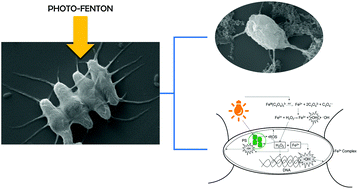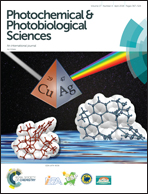Does the photo-Fenton reaction work for microalgae control? A case study with Desmodesmus subspicatus
Abstract
Increased concentrations of nutrients in water bodies caused by effluent discharge, fertilizers and other inputs can lead to artificial eutrophication, increasing the primary productivity, bringing well-known and serious consequences to the environment (such as excessive macrophyte and microalgae growth). Most strategies for phytoplankton control in aquatic ecosystems result in metal accumulation or toxic by-product formation after chlorination. Concerning this matter, the photo-Fenton process (usually applied in wastewater treatment and degradation of a variety of contaminants) has been studied for water and effluent disinfection. However, its application in microalgae inactivation has not been reported until now. Therefore, this work aimed to evaluate the process effectiveness in inactivating microalgae, using Desmodesmus subspicatus as a model. Photo-Fenton experiments were carried out at the lab scale, at 105 cells per mL with 20 mg L−1 of H2O2 and 5 mg L−1 of Fe2+ (complexed with oxalic acid). The cell concentration and Growth Inhibition Test (GIT) were used to evaluate the process efficiency and Scanning Electron Microscopy (SEM) to analyze any alterations in the cell morphology. After performing the photo-Fenton reaction, the individual contribution of the reactants and radiation was investigated. The cell concentration was not significantly reduced during the photo-Fenton reaction, but SEM images indicated possible morphology alterations and the GIT showed the loss of cell viability after 30 minutes of exposure. Effects on the cell growth were also observed when exposed only to hydrogen peroxide.



 Please wait while we load your content...
Please wait while we load your content...